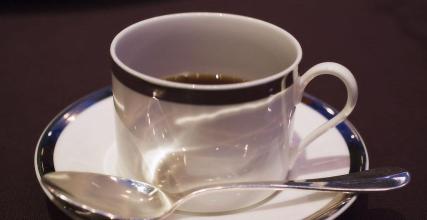Ethiopian Coffee Flavor Taste Manor introduces Ethiopian Coffee Brands
Ethiopia's coffee ceremony is from the hostess with a local grass laid a 2-3 square meters of floor, after the floor is laid, and then prepared to roast coffee beans of the small stove and placed coffee utensils small table.
Next, clean the coffee beans. Take a bowl of pale green coffee beans, wash them in a small pan, just like we wash rice, wash them out and spread them on a slightly concave iron plate, then put the iron plate on a small stove with wood or charcoal as fuel, and start roasting. During the roasting process, the hostess stirred the stir-fry with a curved iron rod from time to time. As the temperature increased, the color of the coffee beans changed from light green to golden yellow. The evaporated coffee beans began to crack and emit a faint fragrance, just like what we usually smell in cafes, only a lot lighter. Roasting further, the beans turn dark brown and the aroma thickens.
After roasting, the next step is to grind the coffee beans. The hostess removed the iron plate to the outside of the stove, cooled it slightly, poured the roasted coffee beans into an iron mortar about 30 cm high, similar to our traditional Chinese medicine processing, and pounded the coffee beans into coffee powder with an iron pestle. This action may not be as simple as it seems, with one hand to hold the iron mortar below, the other hand to raise high, because only high, hit to have the ability. To accurately pound the pestle into the small mouth of the mortar, inexperienced people would probably only hit their own hands. I have also wondered why coffee is not ground in an iron mill or coffee machine. The owner told me that if the machine is used, due to the high-speed friction between coffee beans and metal, it will bring many impurities on the iron, which will affect the pure flavor of coffee after processing.
After the coffee powder is made, the hostess carries a clay plate containing the coffee powder and takes turns delivering it to the guests attending the ceremony for everyone to smell. Next, the coffee powder was poured into a clay coffee pot with a high neck. After adding water, it was boiled on a charcoal stove. On the high neck of the coffee pot, there was a special wooden stopper. The shape was a bit like a wooden top played by children, but it was a bit like a crude one. The role of cork, one is to keep warm, because the local altitude of more than 2500 meters, the temperature of coffee boiling is low, the pot mouth is open, not conducive to the maintenance of temperature; second, in the coffee boiling
Steam can easily rush out through the cracks in the cork. Since they are all made of natural materials, the coffee brewed is naturally more fragrant.
While the coffee was brewing, there was also a porcelain smoke beside it. There was a white powder inside. After inquiring, I learned that this is what is called no (mo4) medicine in traditional Chinese medicine stores. After the porcelain smoke is heated, a curling aroma is emitted, which mixes with the aroma of the coffee pot and diffuses in the room, creating a unique atmosphere. Locals proudly tell me that only coffee drunk in such an atmosphere is authentic Ethiopian coffee.
Coffee (called bna in Amharic, the official local language) is brewed, and before it is tasted, a snack (usually bread or cake) is served. The hostess brings a plate and a knife to the guest, who cuts the snack, somewhat like a birthday cake. This is probably what we call coffee mate today.

Important Notice :
前街咖啡 FrontStreet Coffee has moved to new addredd:
FrontStreet Coffee Address: 315,Donghua East Road,GuangZhou
Tel:020 38364473
- Prev

The characteristics of Jamaican Coffee introduce the flavor and taste of Jamaican coffee manor producing area
It is necessary to take a closer look at the myth of Blue Mountain Coffee, because the image of the past is often inconsistent with the reality of today. In 1725, Sir Sir Nicholas Lawes brought the first Blue Mountain Coffee species from Martinique to Jamaica and planted them in the St.Andrew area. Today, the producing area of St. Andrew is still the Blue Mountains.
- Next

Panamanian Coffee Rosa Coffee Fine Coffee Bean producing area introduction to the flavor and taste characteristics of Panamanian coffee
In 1996, Blaise and Rachel visited a farm for sale in the Haramijun area of the Bocketi Valley, and was attracted by the beautiful farm and immediately bought it. This is Esmeralda. Daniel Lou, the third son of Haramiqiong Farm. It is in this farm that Mr. Bidasson has grown Geisha coffee that attracts the attention of the coffee world. Geisha pronunciation is the same as Japanese.
Related
- Detailed explanation of Jadeite planting Land in Panamanian Jadeite Manor introduction to the grading system of Jadeite competitive bidding, Red bid, Green bid and Rose Summer
- Story of Coffee planting in Brenka region of Costa Rica Stonehenge Manor anaerobic heavy honey treatment of flavor mouth
- What's on the barrel of Blue Mountain Coffee beans?
- Can American coffee also pull flowers? How to use hot American style to pull out a good-looking pattern?
- Can you make a cold extract with coffee beans? What is the right proportion for cold-extracted coffee formula?
- Indonesian PWN Gold Mandrine Coffee Origin Features Flavor How to Chong? Mandolin coffee is American.
- A brief introduction to the flavor characteristics of Brazilian yellow bourbon coffee beans
- What is the effect of different water quality on the flavor of cold-extracted coffee? What kind of water is best for brewing coffee?
- Why do you think of Rose Summer whenever you mention Panamanian coffee?
- Introduction to the characteristics of authentic blue mountain coffee bean producing areas? What is the CIB Coffee Authority in Jamaica?

